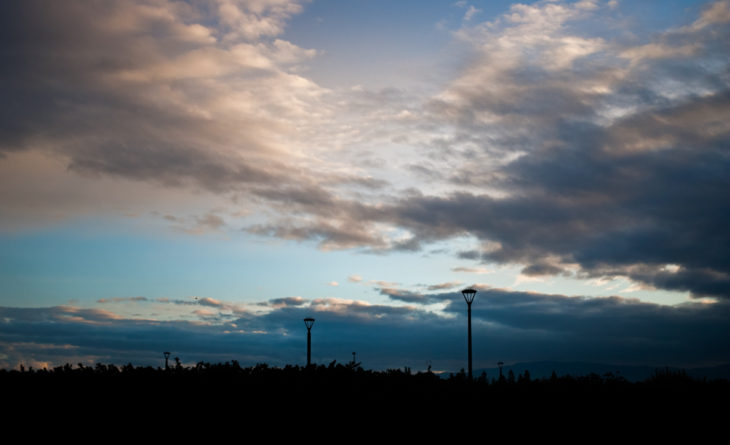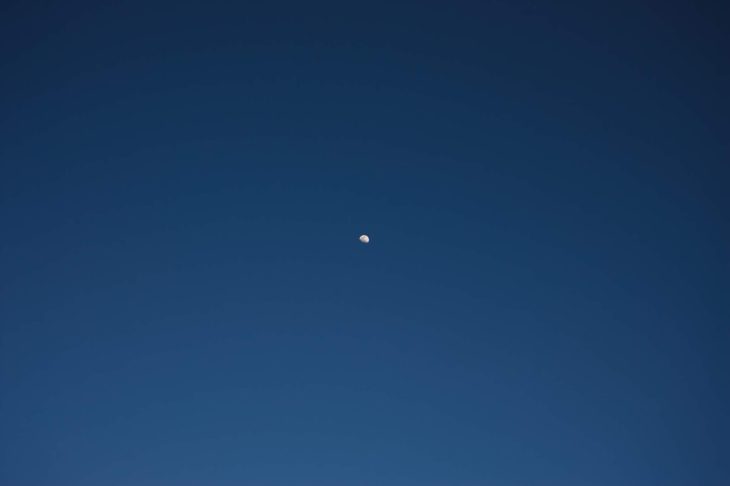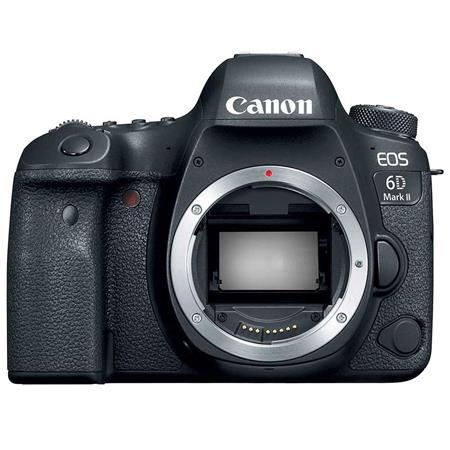Canon released firmware updates for five telephoto lenses. Here they are. Please note: we linked…
Guest Post: Canon EOS-1D Mark III and EOS-1D Mark II N – Two Budget Professional Camera Options
This is a guest blog by Carl Garrard of Photographic Central. Carl is a photographer and gear reviewer with focus on cameras that are still highly capable despite their age. You can follow Carl on his blog. Carl’s post appeared first here. Carl also posted a pretty interesting review about the Canon EOS 40D.
Both cameras can be found on eBay: EOS-1D Mark II N | EOS-1D Mark III
Canon EOS-1D Mark III and EOS-1D Mark II N – Two Budget Professional Camera Options
This is a continuation of my series of articles about highly capable cameras for those of you on a budget. This article is for professionals, or those seriously seeking to be professionals. I chose these two cameras for review because you can get both for about $900.00 used if you play your cards right. Considering you’d have to pay about ten times that much when they were new to get both, I’d say they qualify as excellent subjects for my budget article series here. Warning: These are top quality professional instruments. If you haven’t held a Canon 1D series camera before (or a Nikon equivalent), you still don’t know what a top quality professional instrument feels like. I thought I did, I was wrong. And before those 5D guys jump on my case I say to them: Pick one up and use one before you reply, and you’ll know. Then, you’ll just agree and we can be friends again.
Conclusions: Part I, Mark II N
Canon’s EOS 1D lineup are the camera equivalent of a high end supercar. They have always remained out of reach for me until now. So it’s time to try these two out and give you my opinion of two truly professional level photographic instruments. Let’s start with the conclusions first because that’s what most people jump too.
Canon’s EOS-1D Mark II N is a more lovable and unique camera than the Mark III, yet it still remains highly capable. Its APS-H sized 8.2mp sensor oozes image character, rare or non existent in today’s moderns sensors. It’s just loaded with unique color and grain character, very much similar to negative film which really surprised me. Handling, well, it is much like a playing musical instrument in that you have to learn and master it before it will really sing a tune. It does take some effort to learn, more so than any camera I’ve ever used before it. So yes, it takes more patience to use but, mastering it, well that also renders a unique reward of personal gratification along with a very personal bond. It’s autofocus though, surprisingly is extremely capable, some 14 years after its release. This is no joke, it’s truly excellent. Even in low light, the autofocus does much better than anyone would assume it could based on its age. In fact, it beats any DSLR (bar the other in this article) I’ve ever used in good light, and, it’s in the top three of all time when light gets very dim. Yeah, that’s fantastic and oddly unexpected.
I’d call it the artists 1D, it still manages to keep you in the decisive moment game quite well, but, this camera tends to pull at the heart strings of an artist more that it does a sideline sports photographer these days. In short, the 1D Mark II N absolutely feels like a pro DSLR, it’s refined, quirky but lovable, and yet unsurprisingly reliable and highly capable in demanding conditions. It’s got performance enough to keep this camera relevant well into the 2020’s and beyond.

There’s something about the way the Mark II N makes you learn it and how it renders images, that remind me oddly of shooting with a Leica M. I guess because you have to be more focused your exposure settings in advance, vs. adapting on the fly quickly. Also, the it’s heavier and seemingly denser than the Mark III, and makes it feel more like a classic SLR than a sports car. We can call it an old Aston Martin DB5 I suppose, its fast when you need it to be but its more fun to just drive it casually. Some would disagree with me, and that’s okay. I’m just comparing it to the Mark III.

Since I bought both cameras at nearly the same time, there were times the Mark III got more attention than the Mark II N. But every time I picked it back up and took it for a spin, it impressed me all over again. It’s got this allure and draw to it that is different than the Mark III that tugs on my heart strings more. It’s difficult to describe, but if you tried both cameras, you’d probably understand what I’m talking about. I don’t want to part with it, so likely, I’ll put a fast prime on it and use it for more specific photography tasks.

One thing I do want to note, is that the Mark II N accepts the Mg-Eb magnifying eyepiece which gives you a very large view. The Mark III’s viewfinder was redesigned and this eyepiece will not fit it. So for eye level maximum magnification, the Mark II N has the advantage here.
The heavier weight of the Mark II N is both helpful and a burden at times, depending on the situation. Anytime you are using a prime in low light, the extra weight helps keep down blur from hand shake. The difference of about a half pound between the two, can be felt. Thus the Mark II almost feels like it is better built than the Mark III. For low light, and using primes that have no image stabilization, I’d rather use the Mark II N.

Overall I am very pleased wit the Mark II N. Since it costs about one half of what the Mark III does used, it’s arguably the better “value”. However, value is always judged through the eye of the beholder. To me, spending about three hundred dollars more to get the benefits of the Mark III are worth it for most others. The Mark II N handles like a camera meant to be used in the studio or more deliberate, or repetitive shooting circumstances. It’s not a camera that you’ll be able to adjust on the fly as quickly, but if you are in situations with stable lighting or repetitive photography it’s an excellent performer.
Image quality is quite good from such an old sensor. I’ve nothing to complain about at all. Used with care, this camera can make just as good of prints as my modern cameras up to 16″x24″ without a doubt. The body is built fantastic, battery life is still really good, it’s got plenty of features to make great images even under pressure. So it’s without hesitation that I’d recommend it. So long as you have the patience to learn your way around the Mark II N and get to know it, it will be a great workhorse that will warm your heart and make you smile.

Conclusions: Part II, Mark III

Canon’s EOS-1D Mark III took pro imaging to a new universe, despite some initial hiccups with its AF mirror that in the end Canon rectified. Canon’s service continues to be the best in the industry today, and yes, they still service the Mark III. So, where to start? Well, let’s begin with ergonomics and handling. First of all, it’s noticeably lighter, but just as rugged and well built as the II N. Getting around the Mark III is well, so much different than the Mark II N. It’s a completely overhauled Mark II, and, it set the foundation and precedent for all Canon’s Pro DSLR’s in the future. Gone, are most of the multiple button presses needed to make common setting changes in the Mark II/N. That philosophy was a mere ‘safety’ feature for working professionals in specific or demanding conditions, and it worked for the Mark II series.
The Mark III in comparison, is nothing short of amazing for instantaneous access- much quicker and intuitive to control and command in every aspect of its design. Image quality too was massively upgraded and is quite excellent even by today’s standards. With a sharp lens attached, its weaker AA filter and excellent raw (and JPEGs) give you similar overall detail that an 18mp APS-C Canon sensor would do at base ISO. Again, megapixels aren’t everything, but the quality of pixels is certainly a big part of the equation. I’d never hesitate to make a large 30×40″ print with this camera, as long as I was using a sharp lens (goes without saying for any camera really).

I am definitely impressed with the Mark II N. After spending time with the Mark III, it took the enthusiasm I had with the Mark II N to a different level. What became immediately apparent to me was how capable the Mark III is. Capable of course compared to the Mark II N, but also to any DSLR I’ve used before. Unquestionably, the money I spent on the Mark III is the best I’ve spent on any camera to date in terms of performance, and value for the price.
Anyone who reads my blog regularly, should probably let that sink in for a second.
Considering that I’ve reviewed hundreds of cameras, from nearly all brands, I’d hope that statement has some weight to it. Even the very newest models like the Canon 80D, Fuji XT3, or Olympus OMD EM1 Mk II, can’t touch the capability of the Mark III when it comes critical moment photography. Sure, newer cameras can do a variety of other tasks the Mark III cannot, but that’s not what I bought the Mark III for.

I wanted a camera that could anticipate, respond, and react faster than I can with my own senses for action/instantaneous photography. I wanted this kind of camera, so that I could bring my photography to a different level (this is what pro level cameras are for!). That means I needed the equivalent of a Formula One car in a camera form factor.
And, indeed it is just that.

The Mark III’s auto focus performs so well across the board, that I may never want to use another DSLR, and especially a mirrorless camera, ever again for action/critical moment photography. Simply stated, the Mark III takes command of a moment, it is a tool that will help you capture those exact moments other cameras in the consumer class will definitely miss. Can you still make good action images with other cameras? Well of course you can. But that’s not the point. What I’m telling you is that the Mark III is capable of making excellent images much more oftenwith even less work from the photographer.
This is what they were designed to do. It’s not hyperbole, its real.

This means, the Mark III is a camera that is faster at reacting than you are, no matter how good you think your skills are. Don’t believe me? I know, I wouldn’t believe it either. There’s no other convincing argument I can make with words, you just need to try one for yourself. Honestly, the 1D class cameras have humbled me. I’ll gladly eat some crow when I say that my former assumptions about these cameras were flat out wrong. I finally understand what all the hype has been about.



Similarities

I’ve waited almost 15 years for prices to come down before I mustered up the courage to purchase a 1D Digital Body. First was the 1D Mark II N, and less than a couple days later the 1D Mark III was en-route. I was that impressed with the Mark II N, and with prices as they are, there’s not much risk involved. Honestly, I never thought I’d own one. Now that I do, I can attest the following:
Both of these cameras are larger and heavier than most consumer DSLR’s. However, they are so damn comfortable to hold (in any orientation), and so highly rugged and capable, that you pardon the weight and size. It becomes apparent that any inconvenience they might bring is well worth enduring for the payoffs you can cash in on. If you care at all about advancing your photography to the next level, you’ll feel the same was as I do.
Build quality on the 1D’s is similar on both cameras, it’s simply unrivaled. I’d suspect one could use them in lieu of a demolition wrecking ball. Then after you are done demolishing a building, you could them to take pictures of the rubble after, they would probably still work. Literally, they have to be best built cameras on the market. Leica M’s are well built, but these cameras are designed to take a completely different level of abuse in very harsh climates and perform when it matters most.
Battery life is just phenomenal on both cameras, but the Mark III’s is almost double the life (adv. Mark III). The viewfinder size/magnification is similar on both cameras, although you can use the magnifier on the Mark II N (advantage Mark II N). Both have dual card slots (CF and SD).

Now that I have the two cameras in my possession, I like them both for very different and yet similar reasons. If you want to get truly serious about photography, the III is your best bet overall as a professional platform. Comparatively, it has an edge in practical image quality and overall capability (so long as you get the fixed units) over the Mark II (N).
Do I have a favorite of the two? Yes, both of them. Which one do I grab when it counts the most? The Mark III of course, this is why I bought it. But I love taking the Mark II N out for more um, I guess, casual photography? Yet, I don’t worry about it’s capabilities in any condition that I’ll face. It performs well beyond the expectations I had for a 14 year old camera, it’s really aged so well, and held up so well.

My Mark III is quicker, with familiar handling compared to my other Canon bodies, and refined in so many ways. I love it, but less with my heart and more like a “omg, this camera just won’t stop impressing me..” jaw dropping, I’m blown away kind of love. If you think you need more than 10mp of detail, you probably don’t. When you need it, you know you need it, because you are working pro and your customers demand more resolution for one reason or another.
So for about 99% of cases of gear lust, the Mark III is all you need, unless you do video. If you want to get into a pro camera for half that cost, that offers quite a lot still, then get the Mark II N.
General Notes
I want to quickly comment on the image quality of my Mark III vs. my 6D. Right off the bat I will say that my 6D has better image quality. It’s raw files are more malleable, its got a larger sensor, and more resolution. However, when exposure meets exposure, you’d be surprised at just how good the Mark III files look in comparison. I know DXOMark has a lower “sports” score for the Mark III, but their metrics don’t seem to take into account a practical point of diminishing returns.
In other words, at what point in their measuring metrics does a sensors performance in each category they test become overkill? They base an ISO score on a combination of measured dynamic range and color retention. That’s cool, but, how high does a score need to be in each category in order for an image to look good to the eyes and print well? In other words, how practical are their scores in real life?
Take a look at two ISO 6400 shots below. Tell me which one is the 6D and which is the Mark III. Both were shot at the same exact settings and similar focal lengths. Processed with ACR without any changes or noise reduction or sharpening, same settings across the board.


Not a huge difference, and there is a bit of difference in exposure. One is lighter than the other, which means that they both have different interpretations of an “ISO value”. But really, there’s not a major difference here. That’s why although DXOMark has some value, you can’t really take those values to be practical measurements or needs. Take them with a grain of salt, as a general reference.
But anyways, still life ISO shots are boring. Let’s take a look at how ISO 3200 looks in everyday low lighting, this shot is outdoor at dusk. No NR was done at all in ACR, using the landscape preset for color rendering.

Canon EOS-1D IIN/IIII – Overall Conclusion
I am warning you, once you hold a 1D body, everything else you have used or will use will feel inferior in comparison. You’ll compare everything to them before and after holding one. This is just what happens. I’ve never held a camera before that felt so reassuringly solid and professional. I’m sure the same is true of the top level Nikon D series cameras, but I cannot speak from direct experience.
The fact that the Mark II N can hold up so well to today’s demands is a feat in itself. It’s autofocus is nearly as good as the Mark III’s even without having the ability to micro adjust. It’s the heaviest and the more challenging to use, but there’s an odd enjoyment with that which makes me want to pick it up and use it. It certainly doesn’t feel 14 years old in performance (sensor or autofocus).
The Mark III is a complete redesign over the II/N. From menus to button layout to the way you access them, the features, and a myriad of other changes, conform it to most modern standards Canon has on their prosumer/pro level DSLR’s. It’s highly capable, and probably the biggest “pro” bargain per dollar spent, even over the higher end models that precede it. That is, if pinching pennies is completely necessary.
After my time with both, I can say without hesitation or reservation that the 1D line are just this whole completely different level. True professional cameras. So I warn you, don’t hold one unless you are prepared to rethink your priorities.
Because that’s all I’ve been doing lately as a result. I wonder, what the Mark IV is like…
Stay focused.
-Carl

You can follow Carl on his blog. Carl’s post appeared first here.






